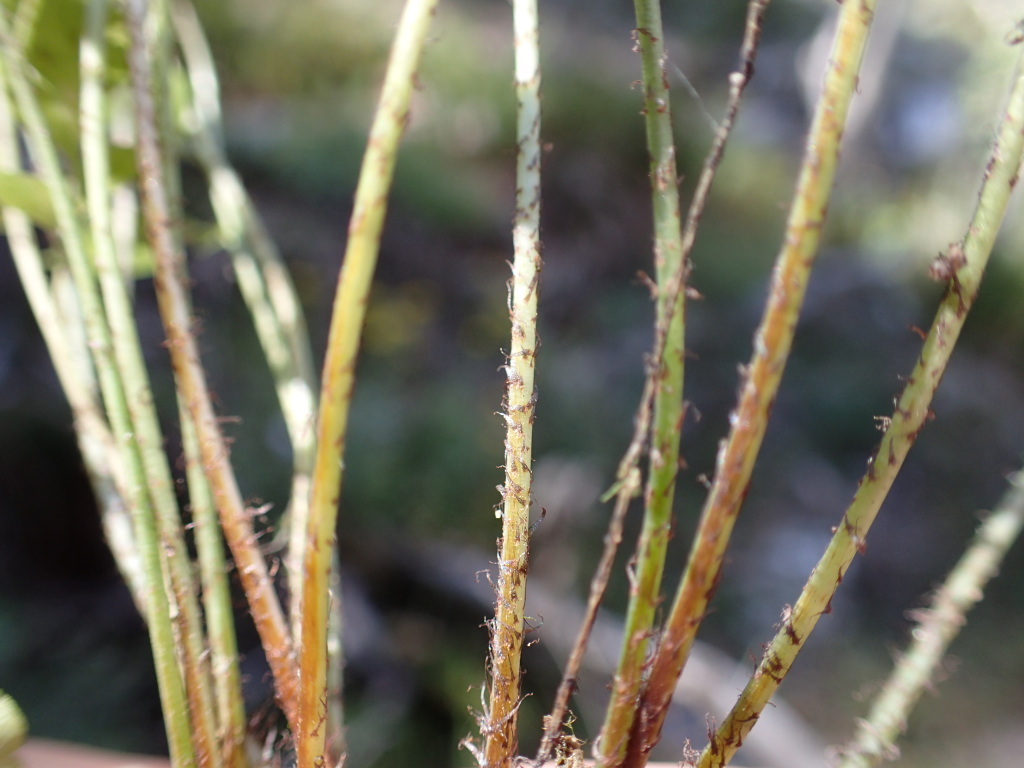Asplenium hookerianum
ColensoRhizome short, covered with dark brown, shiny scales with long fine tips. Fronds tufted, erect to spreading, 5–20 cm long, with scattered red-brown scales extending up stipe, rachises and veins. Stipe shorter or longer than lamina, slender, grooved, brown below, green above. Lamina oblong-triangular, 1–2-pinnate (if 1-pinnate, then basal pinnae usually divided), mid-green to dark green, membranous; rachises slender, green, grooved. Pinnae with slender stalks; pinnules obovate to triangular, c. 3–10 cm long, bluntly toothed or deeply lobed; veins obscure except for raised midvein. Sori short, oblong, oblique to midvein, not reaching margin; indusium oblong, membranous, opening towards centre of pinna.
VRiv, GipP, CVU, HSF, VAlp. Also NSW, Tas. New Zealand. In Victoria, known only from two localities on the Snowy Range, south of Mt Howitt. It is also rare in NSW and Tas.
New Zealand plants are 2–3-pinnate and generally more robust than Australian ones. Asplenium hookerianum can be similar to A. bulbiferum, but that species is generally larger and has less delicate fronds. In addition, the secondary pinnae of A. hookerianum are clearly and slenderly stalked, while those of A. bulbiferum are sessile or shortly stalked.
Entwisle, T.J. (1994). Ferns and allied plants (Psilophyta, Lycopodiophyta, Polypodiophyta). In: Walsh, N.G.; Entwisle, T.J., Flora of Victoria Vol. 2, Ferns and Allied Plants, Conifers and Monocotyledons, pp. 13–111. Inkata Press, Melbourne.
 Spinning
Spinning


